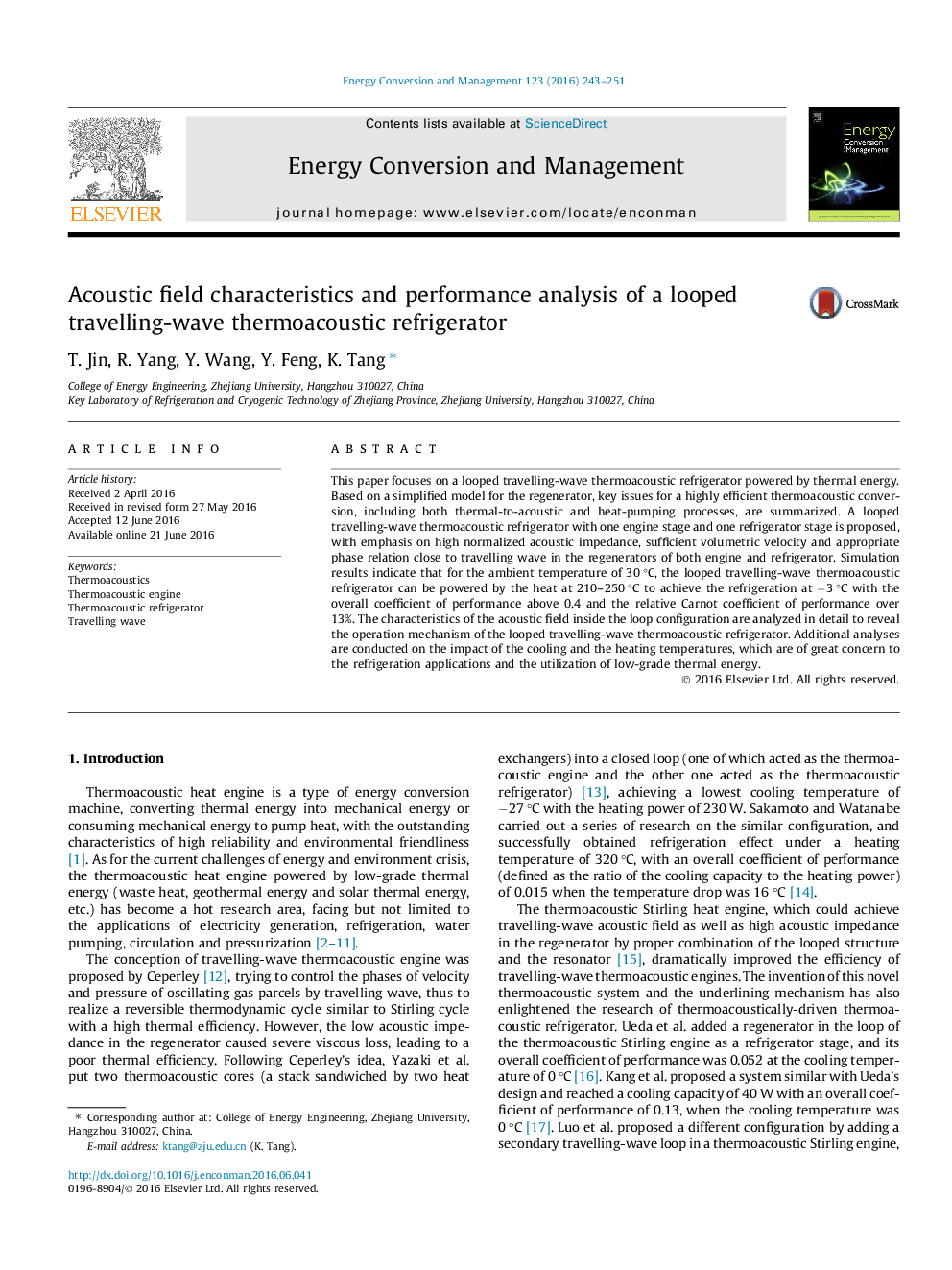| Article ID | Journal | Published Year | Pages | File Type |
|---|---|---|---|---|
| 760124 | Energy Conversion and Management | 2016 | 9 Pages |
•Key issues for a highly efficient thermoacoustic conversion are analyzed.•A looped thermoacoustic refrigerator with one engine stage and one refrigerator stage is proposed.•Effective refrigeration powered by heat sources below 250 °C is demonstrated in the simulation.•Impact of cooling/heating temperatures on system performance is analyzed in view of acoustic field.
This paper focuses on a looped travelling-wave thermoacoustic refrigerator powered by thermal energy. Based on a simplified model for the regenerator, key issues for a highly efficient thermoacoustic conversion, including both thermal-to-acoustic and heat-pumping processes, are summarized. A looped travelling-wave thermoacoustic refrigerator with one engine stage and one refrigerator stage is proposed, with emphasis on high normalized acoustic impedance, sufficient volumetric velocity and appropriate phase relation close to travelling wave in the regenerators of both engine and refrigerator. Simulation results indicate that for the ambient temperature of 30 °C, the looped travelling-wave thermoacoustic refrigerator can be powered by the heat at 210–250 °C to achieve the refrigeration at −3 °C with the overall coefficient of performance above 0.4 and the relative Carnot coefficient of performance over 13%. The characteristics of the acoustic field inside the loop configuration are analyzed in detail to reveal the operation mechanism of the looped travelling-wave thermoacoustic refrigerator. Additional analyses are conducted on the impact of the cooling and the heating temperatures, which are of great concern to the refrigeration applications and the utilization of low-grade thermal energy.
